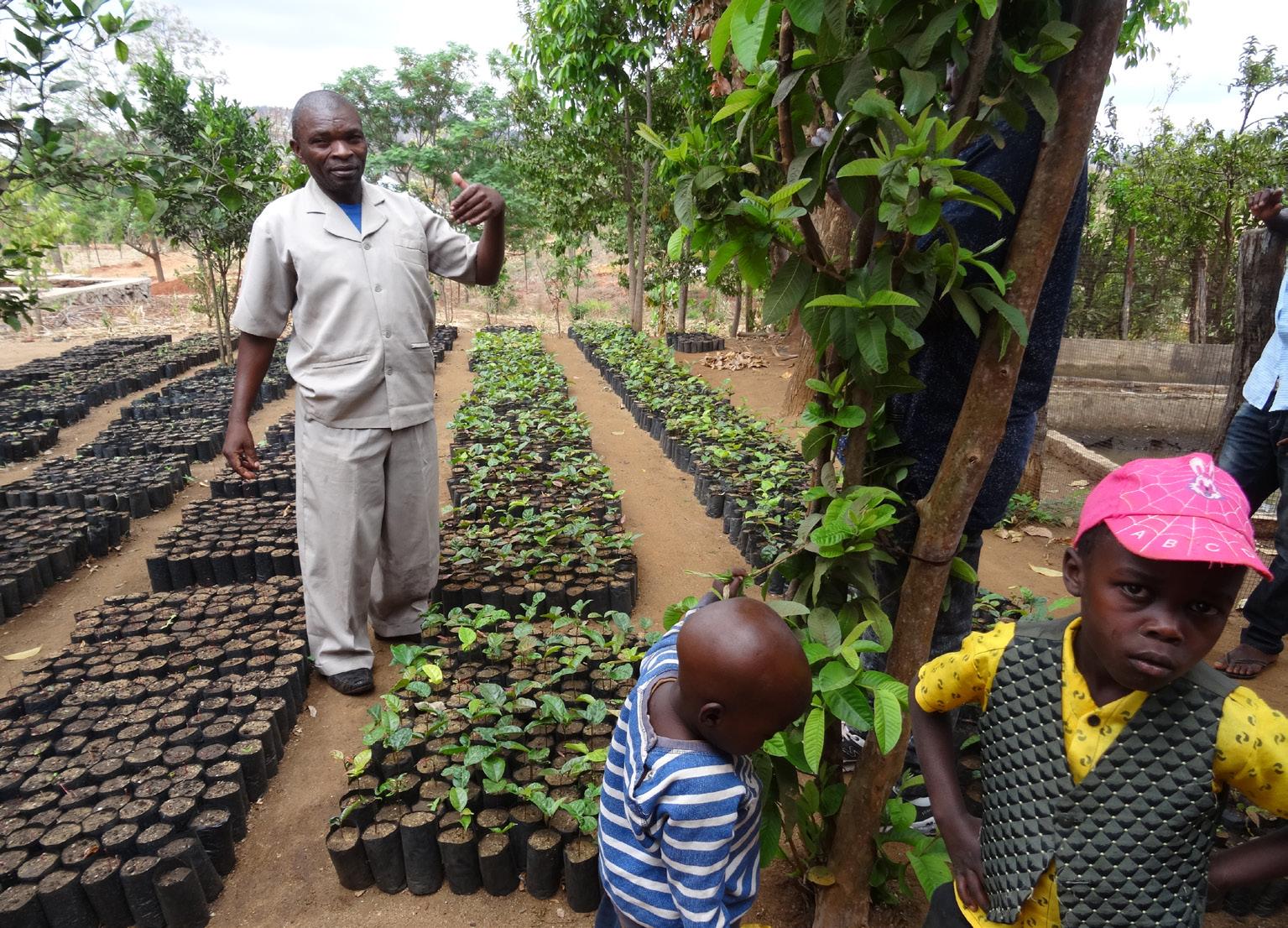
2 minute read
Exercise 8: Identification of co-benefits
This module can be skipped if not suitable in the context, such as in extremely vulnerable communities.
Annex V includes an easy and short exercise designed to give an overview of greenhouse gas emission sources and carbon sinks in the community. This exercise follows up on the climate change research from Module 1 and the development of community adaptation goals and strategies in Exercises 6 and 7.
Facilitation
The facilitators provide large sheets of paper and coloured pencils or markers, and display the adaptation path sheets from the previous module for easy reference. They explain the meaning of co-benefits, using one of the strategies identified by the community as an example.
Sample Table of co-benefits
ADAPTATION STRATEGY
o Reforestation of degraded watershed to improve stream flow during drought
o Small-scale irrigation with pumps CO-BENEFITS
o Carbon sequestration o Improved water quality o Provide shade o Increase biodiversity o Provides income for nursery owners locally FURTHER IMPROVEMENTS FOR CO-BENEFITS
o Use indigenous tree species instead of Eucalyptus o Enhance with bee-friendly flowers o Use fodder tree species as well
o Using renewable energy (solar/wind) for pumps o Monitoring of groundwater levels by the community
Participants analyse the strategies on the adaptation path sheets one at a time, and write them down in a table that lists positive co-benefits and possible refinements as in the sample table.
Discussion
The guiding questions for the discussion are:
How do the adaptation strategies positively or negatively affect the protection of soil, water, biodiversity, forests or climate?
How can we increase the positive environmental and socioeconomic cobenefits of adaptation strategies?
The documentation of this module will inform community planning, and the options for increasing co-benefits may help guide the process. Facilitators can guide participants on the need to be context-specific and to think about what is feasible for the community.
Plan two hours for preparing the table and the discussion.
Remember to document the results. Annex III has templates that may be helpful.
Nursery for reforestation and income generation as co-benefit, Tanzania

Module 7: Community adaptation planning
Development of an action plan and community presentation

Module 7 identifies concrete activities the community can take towards realizing the adaptation strategies and goals, and determines how the final assessment report will be completed. A presentation to the community shares the findings and recommendations of the PACDR analysis as a starting point for more detailed community planning.
The objectives of this module are to develop a first action plan and to share the results of the PACDR process with the wider community. As in Module 6, facilitators conduct the exercise with the entire group, and the group determines the details of the preparation and presentation of the final assessment report.









